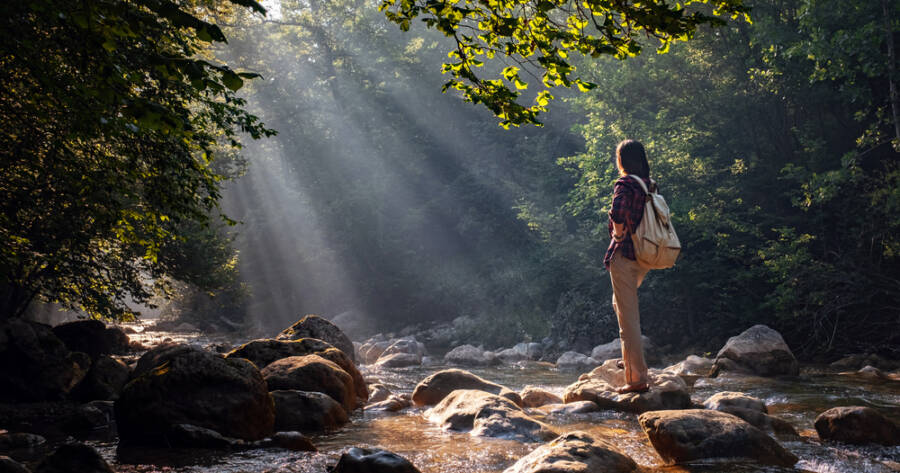In a fast-paced, technology-driven world, more people are turning to nature to restore calm and balance. One practice gaining popularity in the United States is forest bathing, a Japanese tradition known as shinrin-yoku. It involves immersing yourself in the sights, sounds, and smells of nature to reduce stress and improve well-being. But what if you live in a city surrounded by concrete and traffic? The good news is that forest bathing isn’t limited to remote woodlands—it can be adapted to urban life.
What Is Forest Bathing?
Forest bathing is not about hiking or exercising in the traditional sense. Instead, it’s about slowing down and mindfully engaging with the natural environment.
Participants are encouraged to walk quietly, breathe deeply, and focus on sensory experiences, such as the texture of tree bark or the sound of rustling leaves. Studies suggest this practice lowers stress hormones, improves mood, and enhances focus. At its core, it’s about creating a connection with nature, no matter the setting.
Finding Green Spaces in the City
Many cities in the United States are investing in urban green spaces—parks, botanical gardens, and community gardens—that provide opportunities for residents to connect with nature. While these areas may not offer the depth of a dense forest, they still offer trees, plants, and natural light that can create a similar calming effect.
For example, strolling through a tree-lined park or sitting by a small pond can provide moments of stillness. Even rooftop gardens or neighborhood walking trails can serve as substitutes. The key is to seek out spaces where you can step away from noise and distractions, even if only for a short while.
Creating a Forest Bathing Mindset
What makes forest bathing powerful is less about the size of the space and more about how you approach it. In urban environments, adopting a mindful mindset is essential. Start by leaving your phone behind or silencing notifications to minimize interruptions. Focus on breathing deeply, noticing details in your surroundings, and allowing your mind to slow down.
You might choose a shaded bench under a tree, a quiet corner of a park, or a stretch of trail where birds can be heard. Even in a small green patch, practicing intentional awareness can recreate the benefits of traditional forest bathing.
Bringing Nature Closer to Home
When access to green spaces is limited, you can bring elements of nature into your own environment. Indoor plants, balcony gardens, and natural light can all help mimic the calming atmosphere of the outdoors. Some people play recordings of forest sounds, like chirping birds or flowing water, to enhance the sensory experience.
While these adaptations aren’t a complete substitute for being outdoors, they offer a practical way to reconnect with nature in daily life. Combining small indoor practices with occasional visits to nearby parks creates a balance that makes forest bathing more accessible to urban dwellers.
The Health Benefits in City Living
Urban environments are often linked to higher stress levels due to noise, traffic, and crowded spaces. This makes forest bathing particularly valuable for city residents. Studies show that spending time in green spaces can reduce blood pressure, improve concentration, and lower symptoms of anxiety and depression. For workers who spend long hours in offices, even short breaks outside can recharge mental energy.
By making forest bathing part of a weekly routine, urban residents can experience not only improved physical health but also a greater sense of peace in an otherwise busy lifestyle.
Nature Is Closer Than You Think
Forest bathing doesn’t require a remote cabin in the woods—it’s possible even in the heart of a city. By finding local green spaces, approaching them with mindfulness, and incorporating small doses of nature into your home or daily routine, you can enjoy the calming benefits of this practice.
The essence of forest bathing is connection, not location. For urban residents, this reminder is powerful: even in a landscape of concrete and steel, nature’s restorative power is often just a step away.

